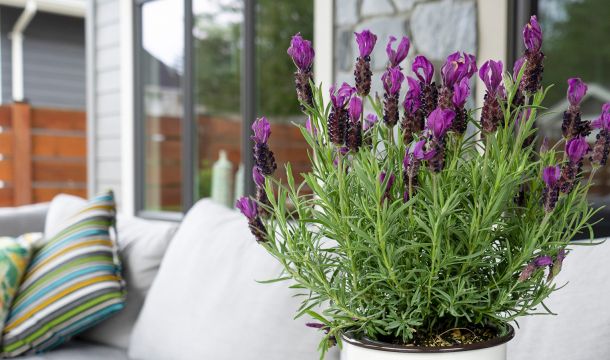The Arthouse Expansion of Agastaches
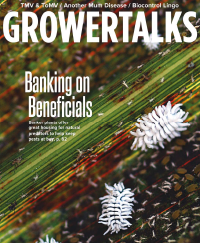
For decades, growers knew ‘Blue Fortune’ as the tentpole Agastache, followed by ‘Blue Boa’. These two standards still sell well, but blue spires don’t explain Agastache’s significant revenue growth over the past decade. The new money came from more colors, cleaner habits, dwarf varieties, hanger versions, and nonstop blooming.
These garden refinements expanded the revenue base and overall popularity of the plant. I often see Agastache ranked in the 30s or 40s, which puts them reliably into the B tier. That’s good coin; it’s worth our attention. Some growers can even move the genus into their Top Ten revenue generators. Modern Agastache deploys a spread of cultivars that do a number of different jobs.
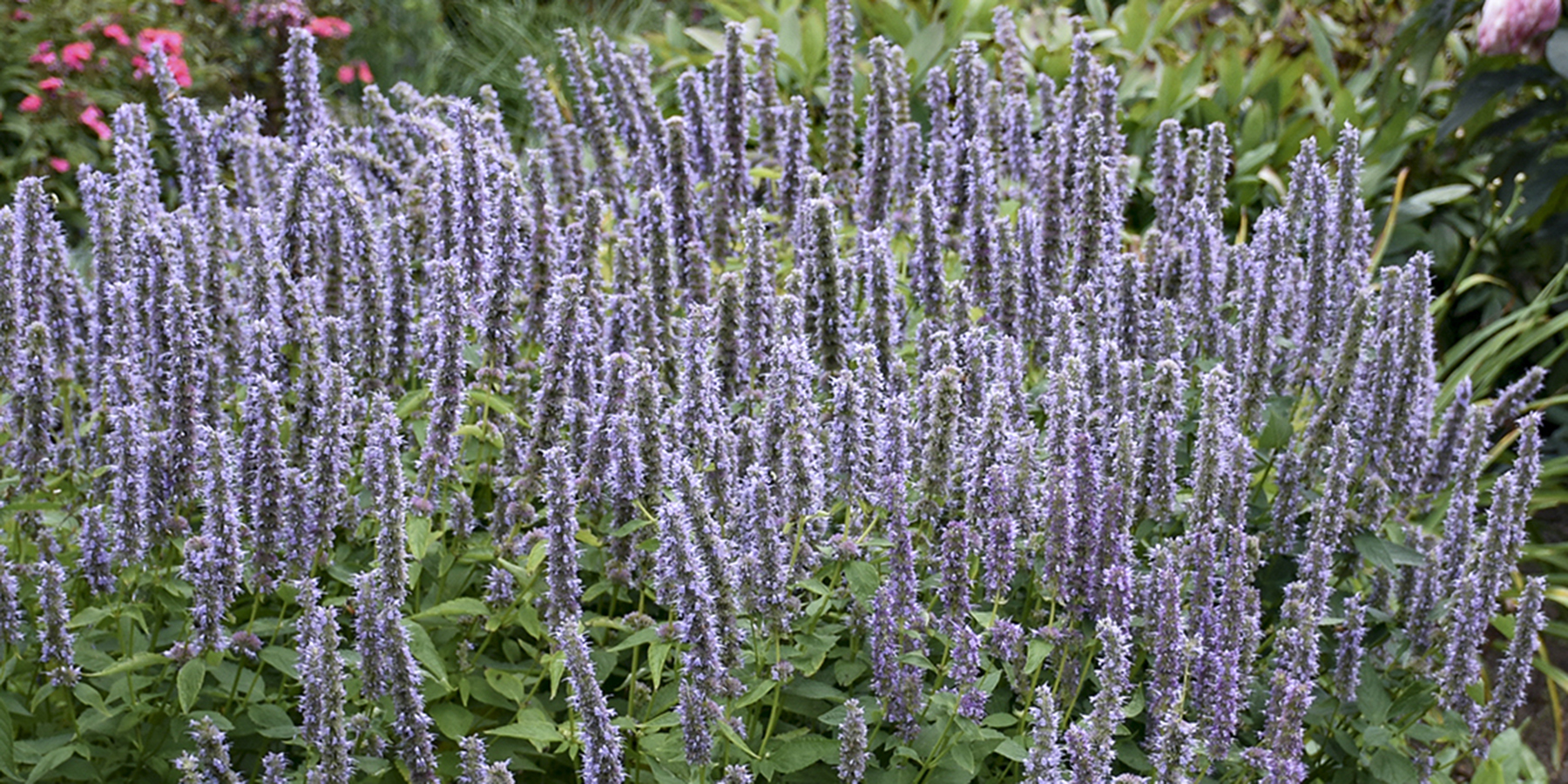
One of the oldest hybrids in production, 'Blue Fortune' still commands significant landscape sales.
Breaking Down the Agastache Look
A defining trait today is their colorful arthouse look, controlled by height. On the tall end are generous spires in different colors. Go to the short end and you’ll find massed stems throwing color over the top of their foliage with florets resembling Salvia or Angelonia, lacier and lighter. The breakdown works something like this:
- Tall: About thigh-high, ‘Blue Fortune’ sets spires of light blue over a moundy, bushy base. ‘Blue Boa’, a sport, improves with larger, darker flowers, thicker spires, and better mildew resistance. ‘Queen Nectarine’ and ‘Royal Raspberry’ (darker leaves) boost the flower count with orange and red.
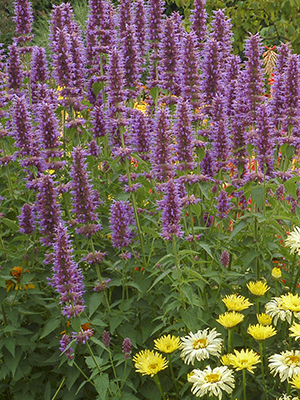 |
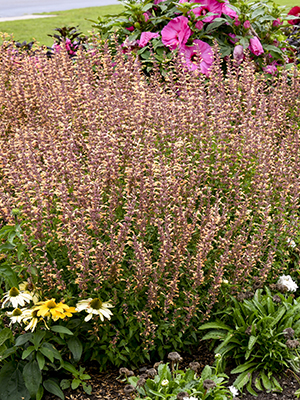 |
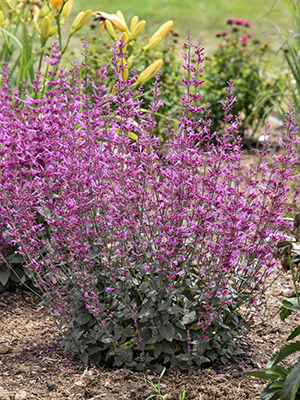 |
| 'Blue Boa' | Meant To Bee 'Queen Nectarine' | Meant To Bee 'Royal Raspberry' |
- Tall-ish: Down a notch are ‘Morello’ (dark red on dark foliage), ‘Peachie Keen’ (light orange), ‘Rosie Rosie’ (purple-pink), and ‘Mango Tango’ (creamsicle). At this point, the spires are massing more tightly as their count per plant increases.
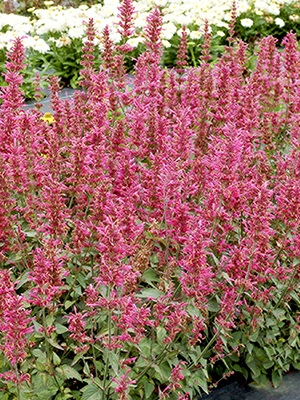 |
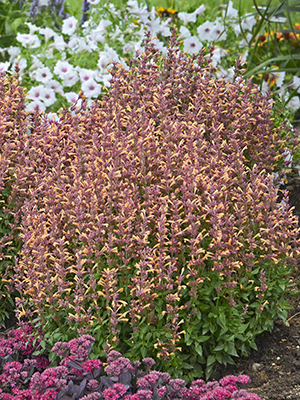 |
 |
| 'Morello' | 'Peachie Keen' | 'Rosie Rosie' |
- Half-Height: Garden-sized packages of Agastache, the Kudos series keeps the flower big but the plant small at about knee-high. Flower size is increasing and the color is thick over the green due to a high stem count, so mass plantings work well. One Kudos is lovely, but a drift is dreamy.
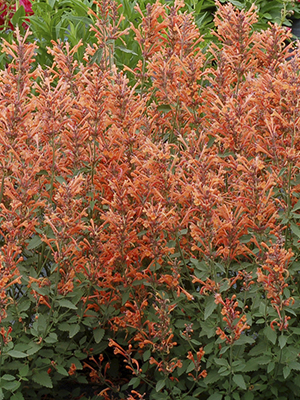 |
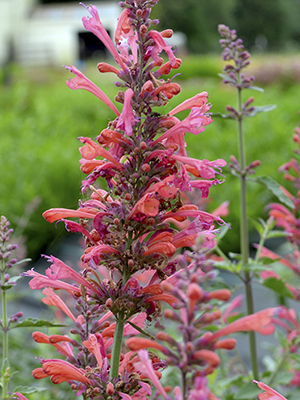 |
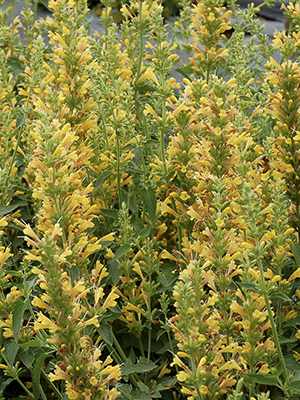 |
| Kudos Mandarin | Kudos Coral | Kudos Yellow |
- Dwarf: About a foot tall, the Poquito series brings the Agastache look to hangers, small pots, and front borders. In this series, flowerheads are distinct and stems tilt at an angle similar to spreading Angelonia.
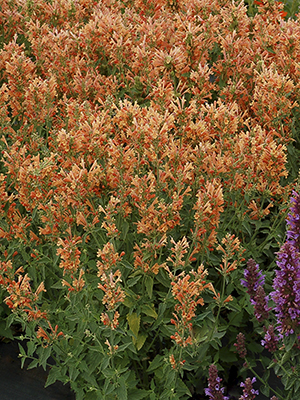 |
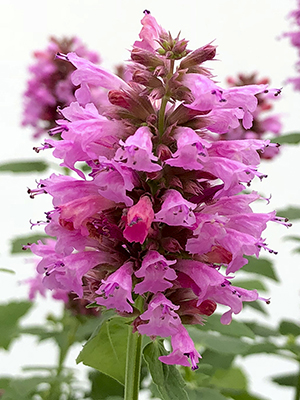 |
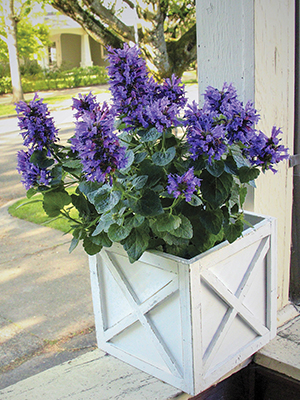 |
| Poquito Orange | Poquito Lavender | Poquito Dark Blue |
- Almost Groundcover: ‘Pink Pearl’ is the shortest version I know, and it still maintains a heavy flower count. Very little green shows through the blooms. Although the height comes in at around eight inches, the spread is double at sixteen.
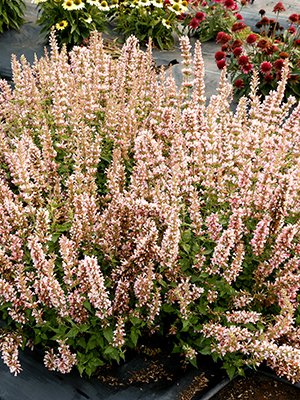 |
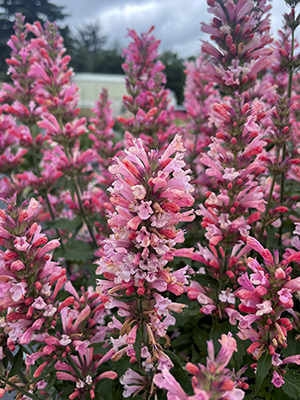 |
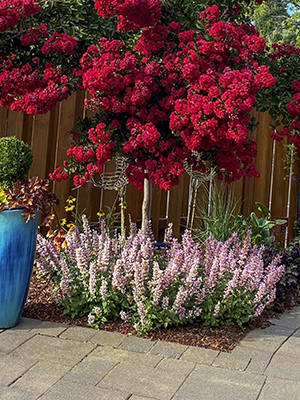 |
| 'Pink Pearl' |
- Fun Variations: Riffs off of the ‘Blue Fortune’ model include ‘Crazy Fortune’ with variegated foliage and ‘Golden Jubilee’ with bright lime-green leaves.
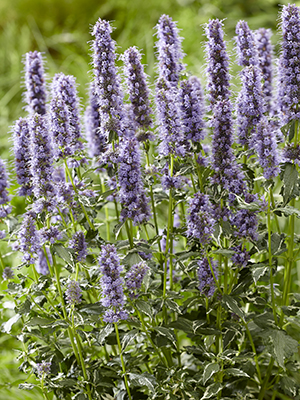 |
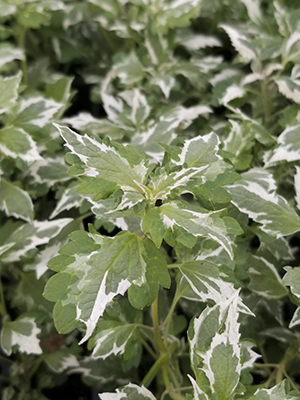 |
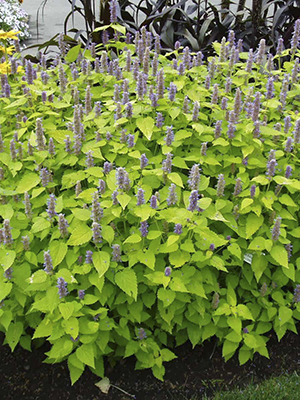 |
| 'Crazy Fortune' (flower) | 'Crazy Fortune' (foliage) | 'Golden Jubilee' |
- Natives: Two species, foeniculum (Midwest) and rupestris (Southwest) are used in habitat restoration and other conservation work. The straight species comfortably reseed themselves for replacement without taking over the place. They still offer heavy pollinator support, and foeniculum’s roots are better suited to handle soggier winter soils.
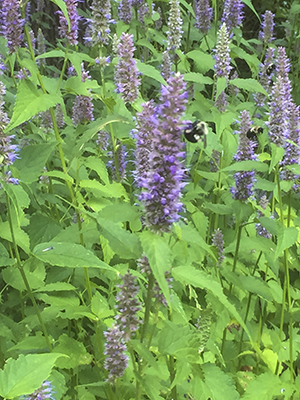 |
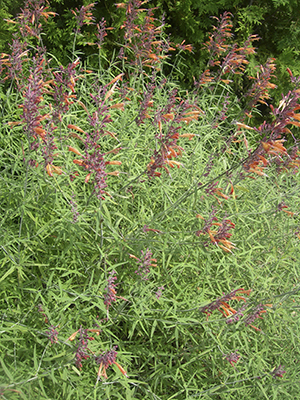 |
| foeniculumn.jpg | rupestris' |
Three (and a Half) Signature Capabilities
Licorice Scent: Gardeners and professionals buy Agastache for the colors and textures, especially the pastels, but they keep the plants because of the deer-resistant scent of licorice. Don’t underestimate this superpower. What good is a dramatic display if it becomes deer salad by nightfall? Agastache’s attractive fragrance adds another dimension to a floral garden, a sellable feature in its own right, but also waves away nibbling pests.
Pollinator Power: Its common name, hummingbird mint, telegraphs a second superpower to the general public. The plant has a salvia-like way of constantly pumping nectar to the florets, which keeps beneficials coming back to their feeding stations. Hummingbirds, in particular, need a constant fountain of nectar for frequent visits, an Agastache specialty.
Strong August Color: A third superpower is the heat and dry performance. There is a genuine need for August color. This is the common complaint for southern locations, but even Midwestern cities like Chicago and Cincinnati have to struggle through sticky weather. Heck, even New England garden centers report successful summer color as a pull. Agastache pretty much shrugs off any condition August throws at it: dry, muggy, or overbearing. If you handle Lantanas, you get the idea.
Perennial-ish: Wild versions last about three years or so, making Agastache short-lived perennials like Digitalis or early Echinacea. In the south, they overwinter fine, but nuances start to kick in as they approach zones seven, six, and five. Wet soils promote winter kill, not so much the cold. If you have slopes, sandy soils, prepared beds, or just a normal garden, Agastache will pull through the chill. Do you see water puddles around your garden bed during freeze/thaw cycles? Yeah, that’s going to hurt. Winter soil that holds its water over time will grief the roots and rot them. That little detail is the -ish in perennial-ish.
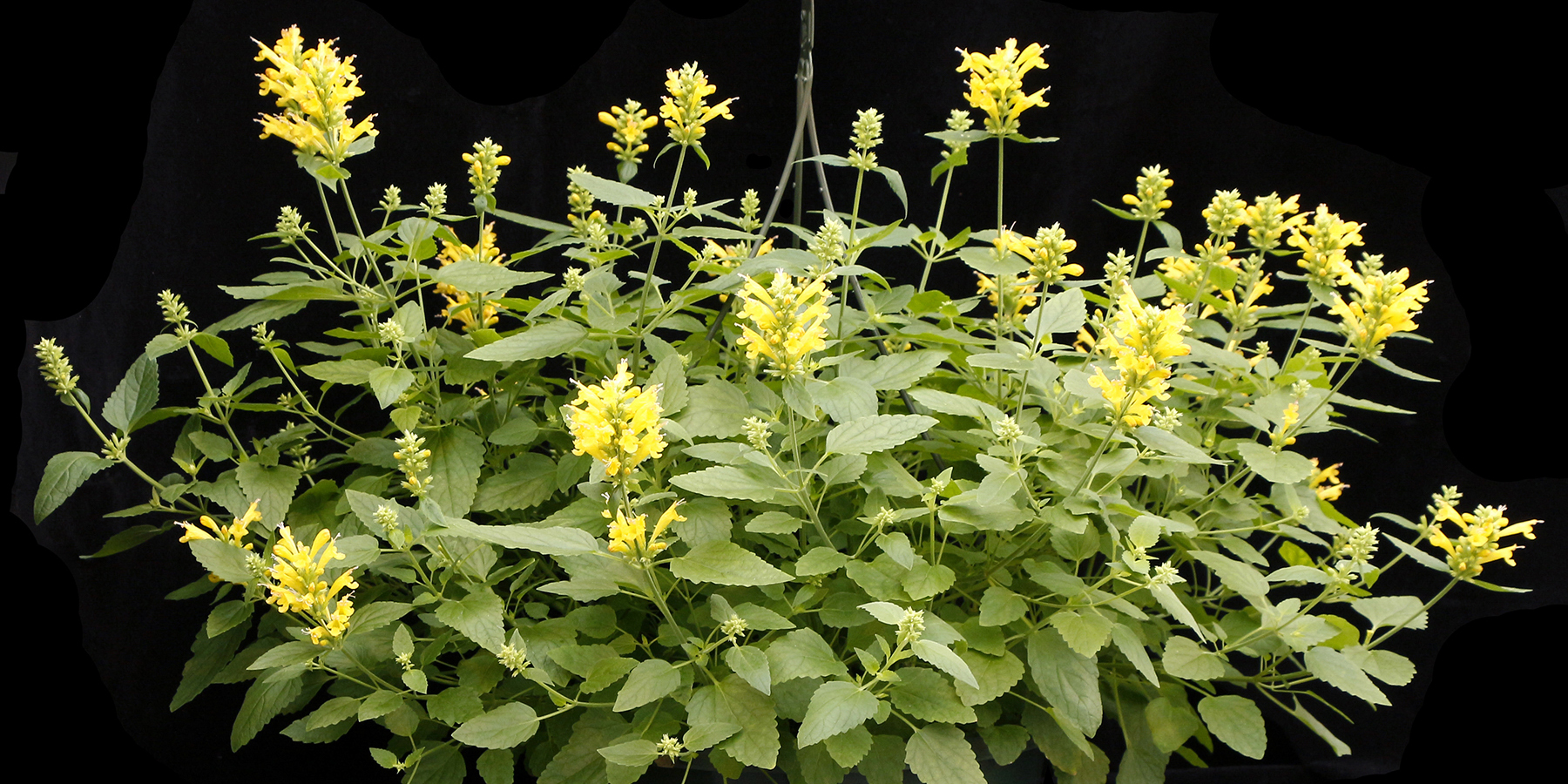
A low-height Agastache, the Poquito series is purpose-bred for hanger and small pot production .
Commercial Work Possibilities
Agastache is one of those categories moving toward greater acceptance in commercial work. If you remember Angelonia or Salvia greggii from a decade ago, you are looking at Agastache today: trembling on the edge of acceptance.
The math of a possible proposal works like this: high flower-to-leaf ratio + June-to-frost flowers + continuous bloom + high heat comfort + dry soil desires = August commercial work. The key to a successful bid is to slot the plants into high summer jobs where their strengths can shine.
This brings us back to the arthouse personality I originally mentioned. Other products do thrive in August heat, but Agastache delivers two unique looks, the tall spires or the short Salvia stylings, wrapped within a long season of color. It also offers deer resistance, high heat and dry soil capacity, and the gentle aroma of licorice.
So there it is. When you pull back and look at the full package, you can see the revenue pull of Agastache. It earns a solid B tier ranking when I sort and organize the revenue streams, especially when I see a good mix supporting the category.
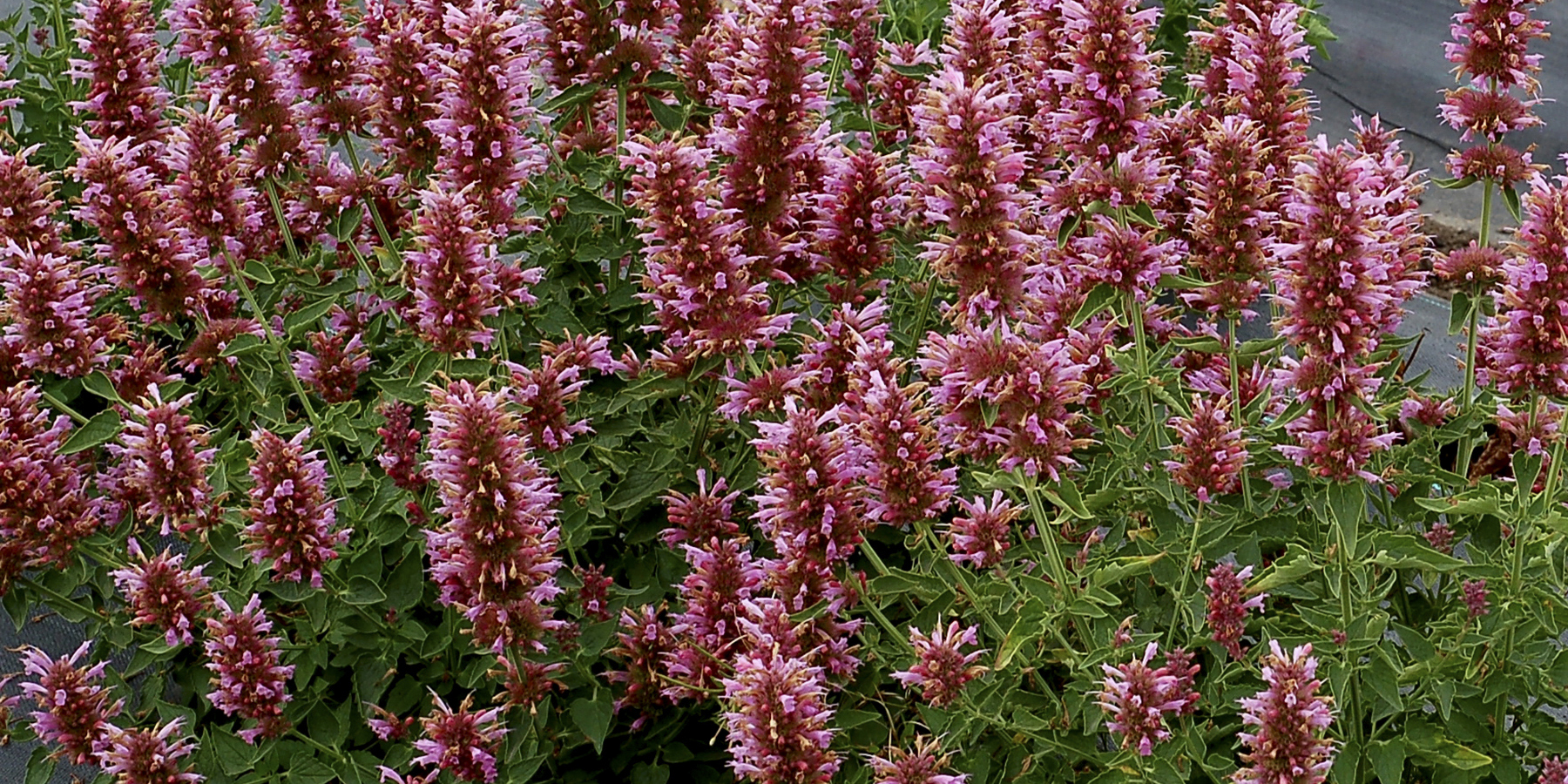
As Agastaches get smaller, the blooms get bigger (Poquito Lavender here).
Popular Articles







